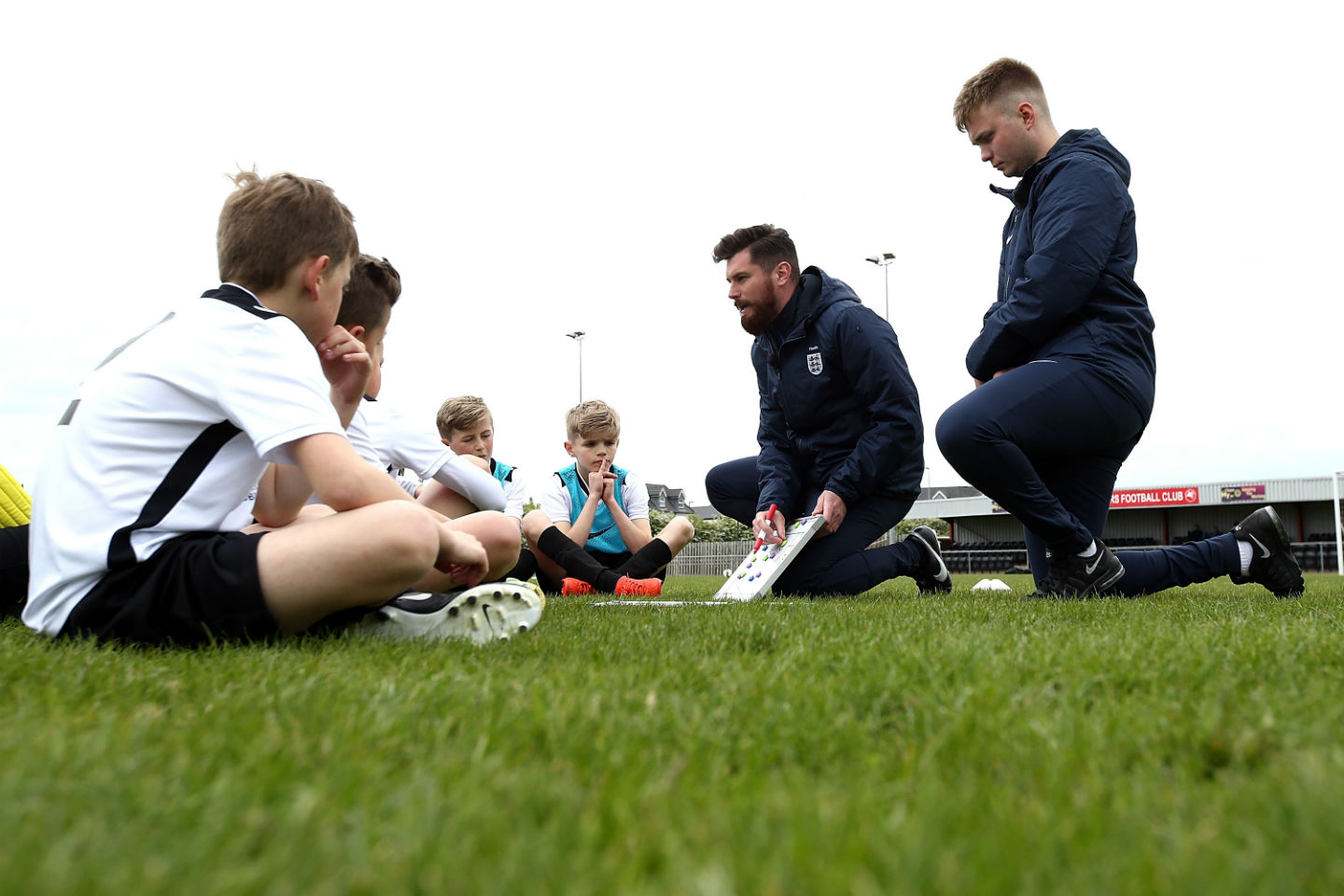
5 ways to connect with your players before a session
- The Boot Room
- 31 August 2016
The FA's Lawrence Lok outlines five ways coaches can engage with players before a session starts.
Outlining the session aims and intentions can be a fantastic way to connect with players.
Schools use these in every lesson, so young players should be familiar with the approach. Typically, teachers provide learners with an overarching aim to outline what will be achieved by the end of every lesson and then a number of specific measurable statements linked to the aim - which helps the learners to recognise how well they are doing.
Usually these statements are set at different levels so that every learner has the opportunity to experience success and they can see what they can do next to be even better. Both the teacher and the learner are then able to refer back to these throughout the lesson to check how much progress is being made.
Why is this an effective thing to do?
Ultimately, by integrating this approach into sessions you can help learners understand what they are trying to do and how this can be achieved. As a result, they should be able to take control of their learning.
From a teacher’s, or a coach's, viewpoint it also informs planning. For instance, if you can see whether or not the aim has been achieved, you'll know whether or not to move the learning forward.
More specifically, if you can identify how each learner has progressed through the measurable statements, you may be able to recognise how to offer individual challenges to stretch or support those learners who require them.
Finally, these can be used to recap from the previous lesson, which can help to spark off the curiosity built up from previous learning.
How you can adapt it to your coaching sessions
While aims of a session are important and can add value to players’ learning, it is important that as coaches we don’t spend too long talking to the players about these because ultimately we want the ball to be rolling for at least 70% of the session.
Also, we don’t want the players to feel like they are at school or in a lesson. With that in mind here are a few ways you might be able to introduce aims/intentions into a session:
1. Use an interactive Whiteboard
The learning aim and differentiated challenges could be written on a whiteboard at the start of the session.
Players could read them on arrival and begin to think about which challenge they are going to attempt first while playing in the arrival activity. They could also put their initials by any of the challenges at any point within the session when they feel they have achieved it.
This will allow you, as the coach, to view how players feel they are doing. You can also use specific questioning with each individual based on the challenge they feel they have achieved or are working towards.
There could also be a space on the whiteboard where players can write:
- the coaching points alongside the challenge which helped them achieve it
- questions linked to the challenge
- their own challenges for themselves or others to complete.
2. Try out technologyDigital technologies are increasingly transforming the way we work, live, learn and play.
Tablet devices are now commonly used as an effective and engaging learning tool to improve motivation and engagement in educational settings. You could use a tablet or something similar to introduce learning aims, objectives and outcomes before or during a session in order to connect with the learners in the following ways:
- Giving the learners an interactive view of the session plan from The FA Coach's App which could be available before they arrive at the session.
- Using Hive to show video clips of the practice to be undertaken to allow learners to visualise what is being asked of them.
- Illustrate through video, examples of professional players performing specific skills related to the session topic.
- The advantage of tablet devices means that as they are mobile, you can introduce learning objectives at the start of the session and then use various Apps during the session to enable learners to analyse and reflect on their learning.
3. Print your session plan
Print your session out before the start and have it attached to your tactics board or on the wall. When players arrive they can go and read the session plan before starting your activity on arrival. This can save time when you want to start the session as the players will already know what they are working on.
4. Involve your players' parents
How can you get parents to help you? Could you text or email your session objective at the start of the week when sending out matchday information? On the drive to training parents could discuss the theme with their child so they already have an understanding of the session objective before the start of the session.
5. Train like a pro
Try and build curiosity within your session. Can you link your objective with their idols? Rather than telling a player 'we are working on shooting' can you be creative and include your players when sharing them?
For example, holding up a picture of Jamie Vardy or Toni Duggan and asking the question – 'looking at the picture, what do you think we are working on tonight?' – you can build on this and start delving into technical questions such as 'what ways do they score?' or 'what type of runs do they make?'


